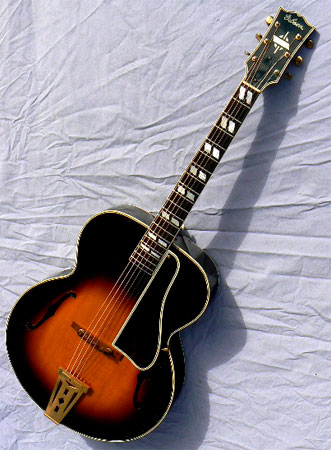
Home / Instruments /Accessories / Ordering / Tips
archtop.com
1936 Gibson L-12
Price and Status: For pricing and hold status of this instrument, please check here. If this instrument does not appear on the Instruments page it has been sold. To be notified of examples of this or any other model in the future, please email your specific requests to [email protected].
Serial #: 92760 white oval label.
Body size at lower bout: 17". Scale length: 24.9" Nut Width: 1 11/16"
Materials: Handcarved bookmatched solid spruce top; solid maple neck, solid mahogany back, solid maple sides, Brazilian rosewood fingerboard; art-deco peghead mother of pearl inlay and double parallelogram fingerboard inlay; bound fingerboard, peghead and body; original bone nut.
Hardware: 100% original hardware includes gold art deco trapeze tailpiece; gold Grover butterbean tuners; triple bound tortoise pickguard, compensated adjustable rosewood bridge.
Notes: Twenty five dollars down. ac_35L12_309.html And three dollars a week. Every week. For over a year. That's what it took Mr. Charles Morrissey of Woodlawn, NJ, to buy this gleaming instrument from the NY Band Instrument Co. in 1938. We know this because every single installment slip has been meticulously preserved in the handsome black "red-stripe" hardshell case, along with two original sales receipts.
Introduced in 1930, the Gibson L-12 was an upmarket addition to the company's newly expanding archtop line. Originally a 16" guitar with ornate "picture frame" fingerboard inlays, the body was upsized to 17" in 1934. Designated an "Advanced Model", this larger L-12 differed from the L-5 only in cosmetic details. Like the L-5, the L-12 had all gold hardware, and a sunburst back as well as top. Visually, the Gibson L-12 was distinguished by its pronounced art deco design, from it's split-cross peghead inlay to it's unique flat-plate tailpiece with geometric motifs. This model also was the first to display the double parallelogram fingerboard inlay, later to become Gibson's most iconic fretboard design. Much rarer than either the L-5 or the L-7, the L-12 remains the most thoroughgoing example of art deco design on a Gibson instrument.
Most significantly however, between 1934 and 1939 the 17" pro-sized Gibsons were carved with X-braced soundboards. This style of bracing produces a tone which is typically warm and open, with significantly more bass response and sustain than parallel braced bodies. Quickly adopted by D'Angelico, the X-brace body became standard for D'Aquisto, Benedetto and most contemporary fine archtop builders.
This fine example is from the first year for the rare art-deco flat plate tailpiece. With 100% original hardware and finish, the instrument is free of cracks and buckle wear, and shows only the most incidental pick wear. Both back and sides show attractive flame maple under the amber sunburst finish. The original gold hardware is in excellent condition, and the rare original bound tortoise pickguard is in perfect shape. The instrument has a powerful open voice, with exceptional clarity and a warm, throaty tone. The neck has a very contemporary "C" profile, with none of the clubbiness of many prewar necks, and a nice rounded fingerboard radius for easy chord work and soloing. A great player, very well cared for, and one of the most attractive designs on any guitar of the streamline era.
Setup: The frets have been precision leveled, recrowned and polished; trussrod tension and neck relief adjusted; bridge height adjusted; bridge compensation set; string slots at nut and bridge inspected and recut as necessary; bridge foot contour inspected and fit to top as necessary; bridge radius inspected and recurved as necessary; bridge wheels and tuners lubricated; fingerboard and bridge oiled; body and neck cleaned and hand polished.
Case: Original Gibson black 'red-stripe' hardshell case.
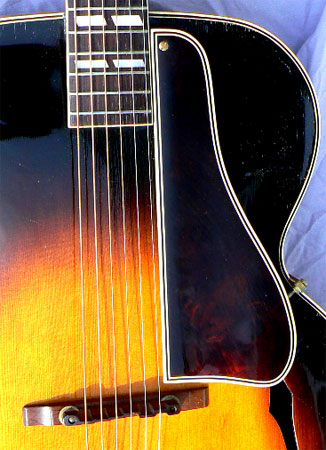
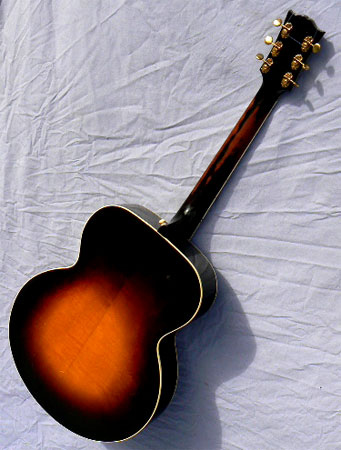
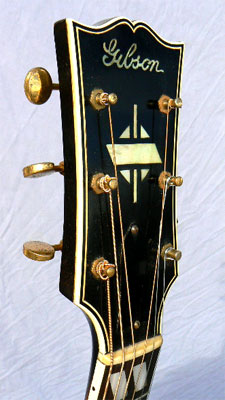
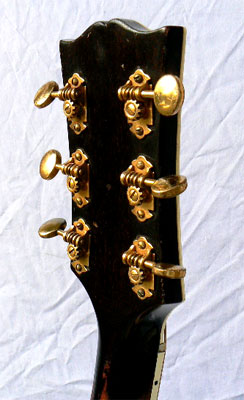
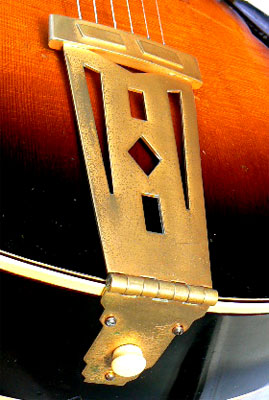
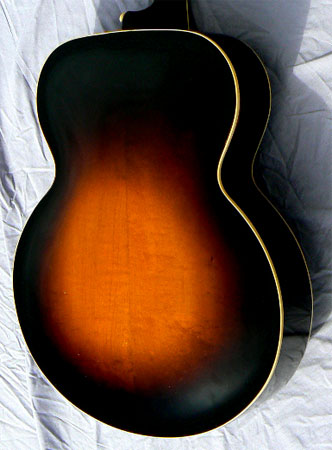
Home / Instruments /Accessories / Ordering / Tips